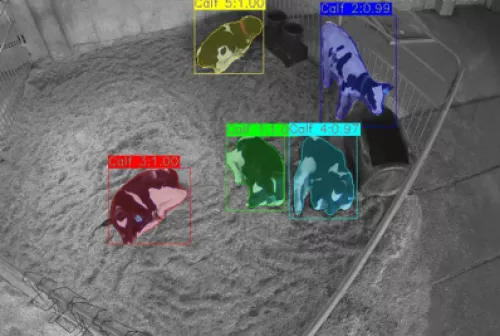The University Cattolica of Piacenza introduces "Digital Livestock"

On November 9th, at the Piacenza campus of the Catholic University of the Sacred Heart, as part of the dissemination activities of Spoke 6, a flagship project of Formidabilæ, the seminar "Digital Livestock" was held. The seminar was conducted by Joao Dorea, Assistant Professor in Precision Agriculture and Data Analytics at the University of Wisconsin-Madison, and his doctoral student Rafael Ferreira. The two researchers came to Piacenza to install special cameras at the CERZOO experimental farm capable of real-time recording of the body condition of dairy cattle.
The algorithm that yields the result was developed by Dorea's group and holds valuable information related to health, well-being, and productive performance. The cameras will be used at CERZOO to achieve an early diagnosis of any metabolic imbalances in peripartum dairy cows.
Dorea and Ferreira's visit also provided a valuable opportunity for training and scientific exchange, occurring during the seminar and primarily aimed at students, researchers, and professors at the university. Professor Dorea presented the advantages of precision livestock farming (PLF), which, thanks to various types of sensors, allows for large-scale, real-time, automated, and non-invasive data collection at the individual animal level, or related to management and the environment. In this context, Dorea's research focuses mainly on computer vision systems, which extract quantitative information from videos or digital images through artificial intelligence algorithms.
One advantage is that the video/image format can be used to extract much more information compared to a single sensor worn by the animal (e.g., on limbs, collars, or ear tags), which detects only one type of data. The images used can be of different types, such as RGB, infrared, thermal, or depth. During the seminar, some deep learning methods were presented to analyze images, identify animals, and monitor their condition or behavior.
The initial practical applications of image analysis mainly involved calculating body weight and fattening status based on biometric measurements in cattle and pigs, but quickly extended to various aspects of the livestock sector. For example, Dorea's group developed and tested algorithms for monitoring feeding behavior, calculating respiratory frequency in dairy cows subjected to heat stress, and estimating a locomotion score based on the analysis of the animal's gait and the angle of various joints to identify lameness problems. Additionally, through hyperspectral images, it is possible to estimate the particle size of forages and the diet of cattle. Among the applications is the ability to predict some of the typical peripartum pathologies. Images recorded by cameras were used to calculate the fattening status of animals before calving and predict the risk of subclinical ketosis at the onset of lactation.
All these techniques can have significant operational implications in farm management, also ensuring animal welfare. Precision livestock farming has great potential in various areas of the dairy industry to improve efficiency, sustainability, and traceability of animal-origin products.
